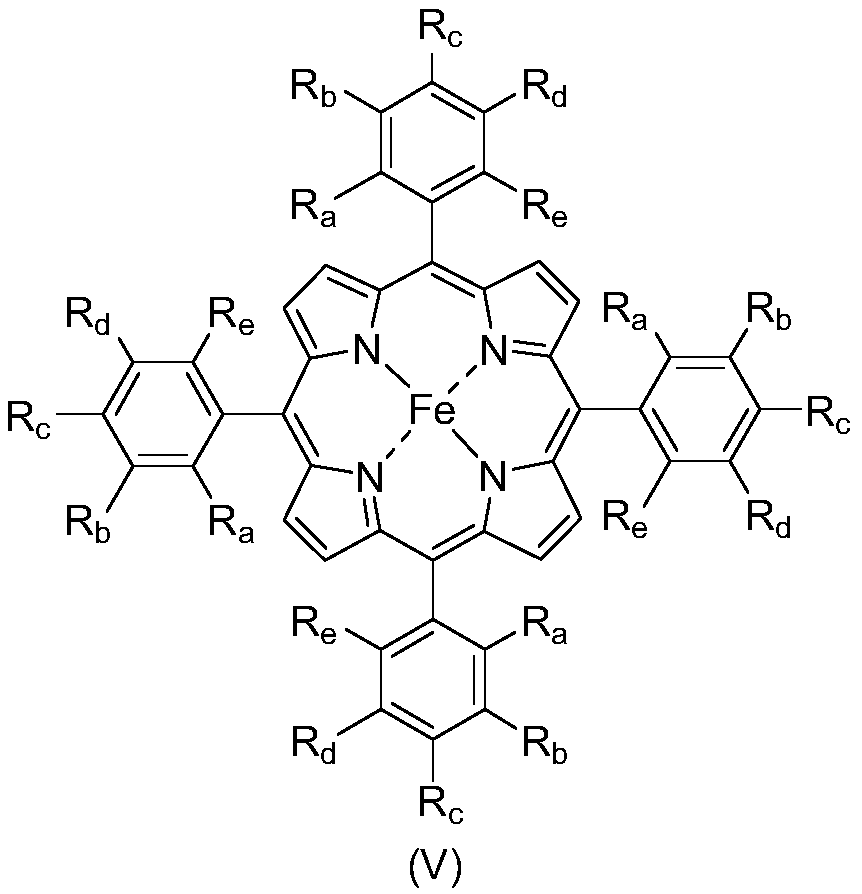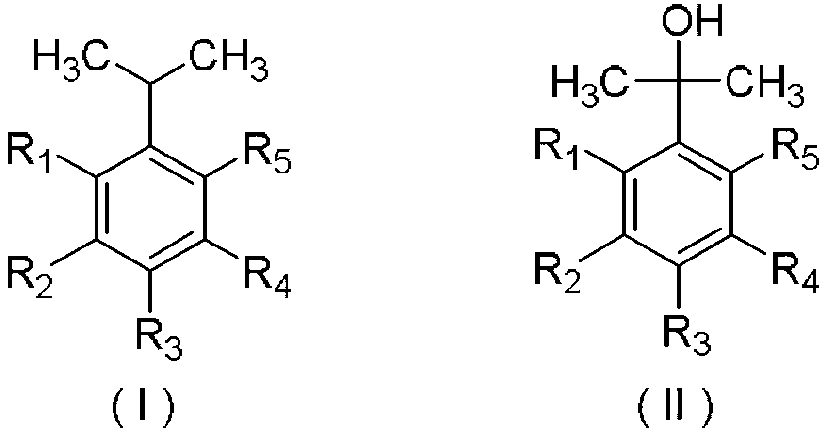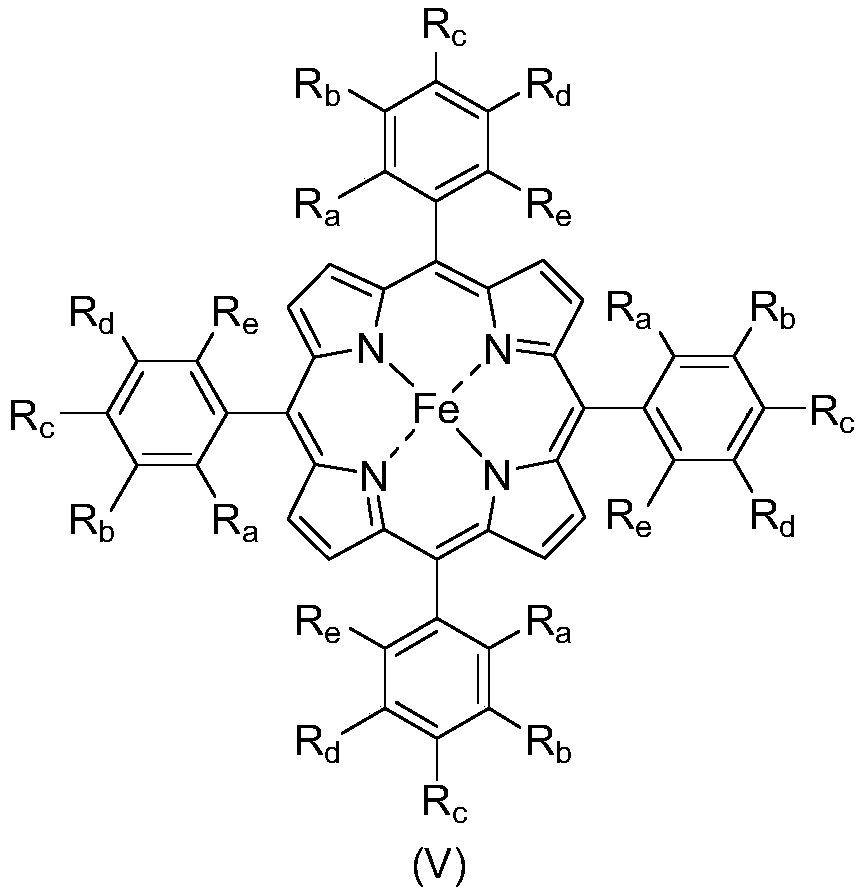Method for selectively oxidizing cumene compounds
A technology of compound and cumene, which is applied in the field of organic chemical industry and fine organic synthesis, can solve the problems of reduced environmental compatibility and biocompatibility, product transition metal pollution, and reduced safety, so as to achieve novel reaction methods and avoid toxicity and harm The use of organic solvents, the effect of easy operation
- Summary
- Abstract
- Description
- Claims
- Application Information
AI Technical Summary
Problems solved by technology
Method used
Image
Examples
Embodiment 1
[0030] In a 100mL agate ball mill jar, 1.20g (10mmol) cumene, 0.0004g (0.0005mmol) 5,10,15,20-tetrakis(4-chlorophenyl) porphyrin iron (II), 2.57g (20mmol ) 70% t-butyl hydroperoxide aqueous solution and 3.60 g of anhydrous sodium sulfate were mixed evenly, and the ball milling tank was sealed. At room temperature, the ball milling reaction was carried out at 600 rpm for 12.0 h, and the ball milling was stopped every 1.0 h to release the gas in the ball milling tank. After the reaction was completed, the resulting reaction mixture was dissolved in 30 mL of absolute ethanol, and stirred at room temperature for 30.0 min. Filter, wash the obtained filter cake with 2×10 mL of absolute ethanol, combine the ethanol solution, and dilute the obtained ethanol solution to 100 mL. Pipette 10 mL of the resulting solution, add internal standard 2-naphthoic acid, and perform liquid chromatography analysis. Cumene conversion rate 33%, 2-phenyl-2-propanol selectivity 89%, acetophenone select...
Embodiment 2
[0032] In a 100mL agate ball mill jar, 1.20g (10mmol) cumene, 0.0020g (0.0025mmol) 5,10,15,20-tetrakis(4-chlorophenyl) porphyrin iron (II), 2.57g (20mmol ) 70% t-butyl hydroperoxide aqueous solution and 3.60 g of anhydrous sodium sulfate were mixed evenly, and the ball milling tank was sealed. At room temperature, the ball milling reaction was carried out at 600 rpm for 12.0 h, and the ball milling was stopped every 1.0 h to release the gas in the ball milling tank. After the reaction was completed, the resulting reaction mixture was dissolved in 30 mL of absolute ethanol, and stirred at room temperature for 30.0 min. Filter, wash the obtained filter cake with 2×10 mL of absolute ethanol, combine the ethanol solution, and dilute the obtained ethanol solution to 100 mL. Pipette 10 mL of the resulting solution, add internal standard 2-naphthoic acid, and perform liquid chromatography analysis. Cumene conversion rate 41%, 2-phenyl-2-propanol selectivity 90%, acetophenone select...
Embodiment 3
[0034] In a 100mL agate ball mill jar, 1.20g (10mmol) cumene, 0.0008g (0.0010mmol) 5,10,15,20-tetrakis(4-chlorophenyl) porphyrin iron (II), 2.57g (20mmol ) 70% t-butyl hydroperoxide aqueous solution and 3.60 g of anhydrous sodium sulfate were mixed evenly, and the ball milling tank was sealed. At room temperature, the ball milling reaction was carried out at 600 rpm for 12.0 h, and the ball milling was stopped every 1.0 h to release the gas in the ball milling tank. After the reaction was completed, the resulting reaction mixture was dissolved in 30 mL of absolute ethanol, and stirred at room temperature for 30.0 min. Filter, wash the obtained filter cake with 2×10 mL of absolute ethanol, combine the ethanol solution, and dilute the obtained ethanol solution to 100 mL. Pipette 10 mL of the resulting solution, add internal standard 2-naphthoic acid, and perform liquid chromatography analysis. Cumene conversion rate 38%, 2-phenyl-2-propanol selectivity 91%, acetophenone select...
PUM
 Login to View More
Login to View More Abstract
Description
Claims
Application Information
 Login to View More
Login to View More - R&D
- Intellectual Property
- Life Sciences
- Materials
- Tech Scout
- Unparalleled Data Quality
- Higher Quality Content
- 60% Fewer Hallucinations
Browse by: Latest US Patents, China's latest patents, Technical Efficacy Thesaurus, Application Domain, Technology Topic, Popular Technical Reports.
© 2025 PatSnap. All rights reserved.Legal|Privacy policy|Modern Slavery Act Transparency Statement|Sitemap|About US| Contact US: help@patsnap.com



